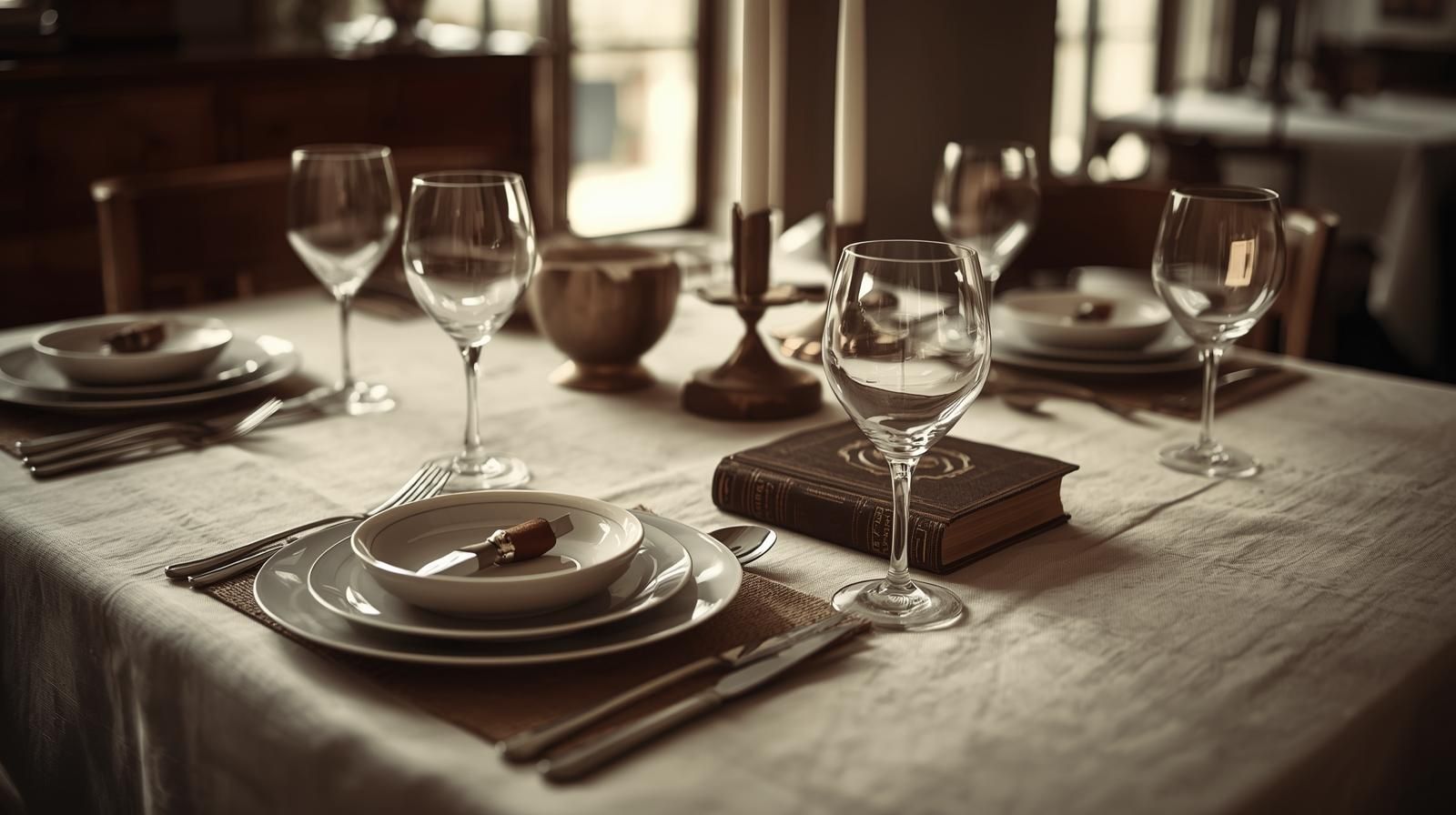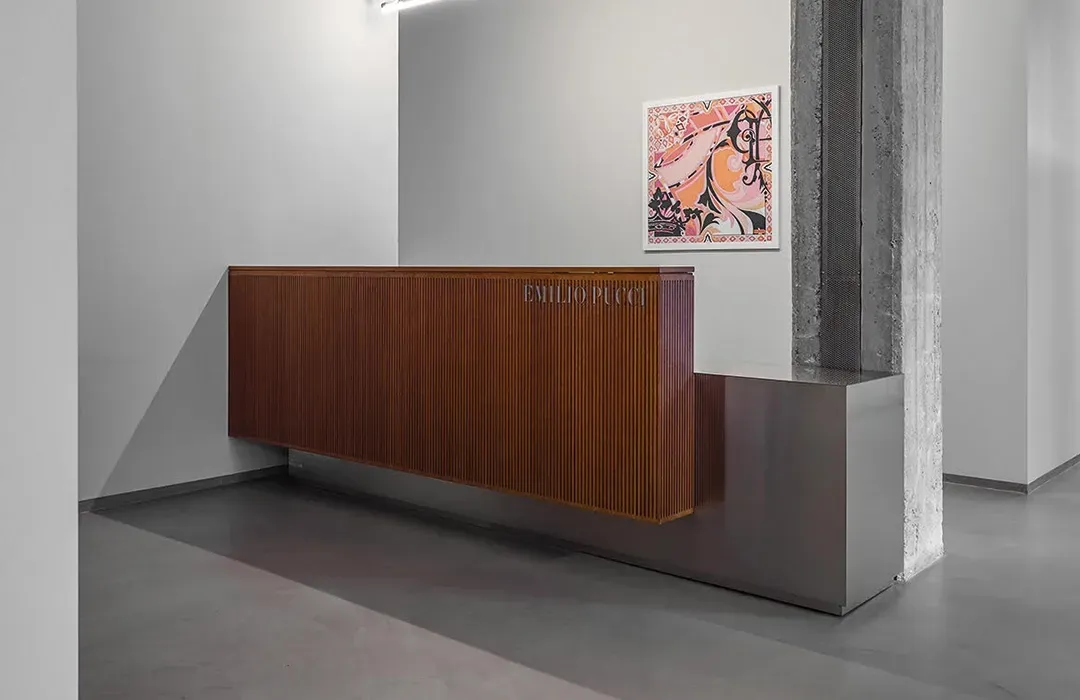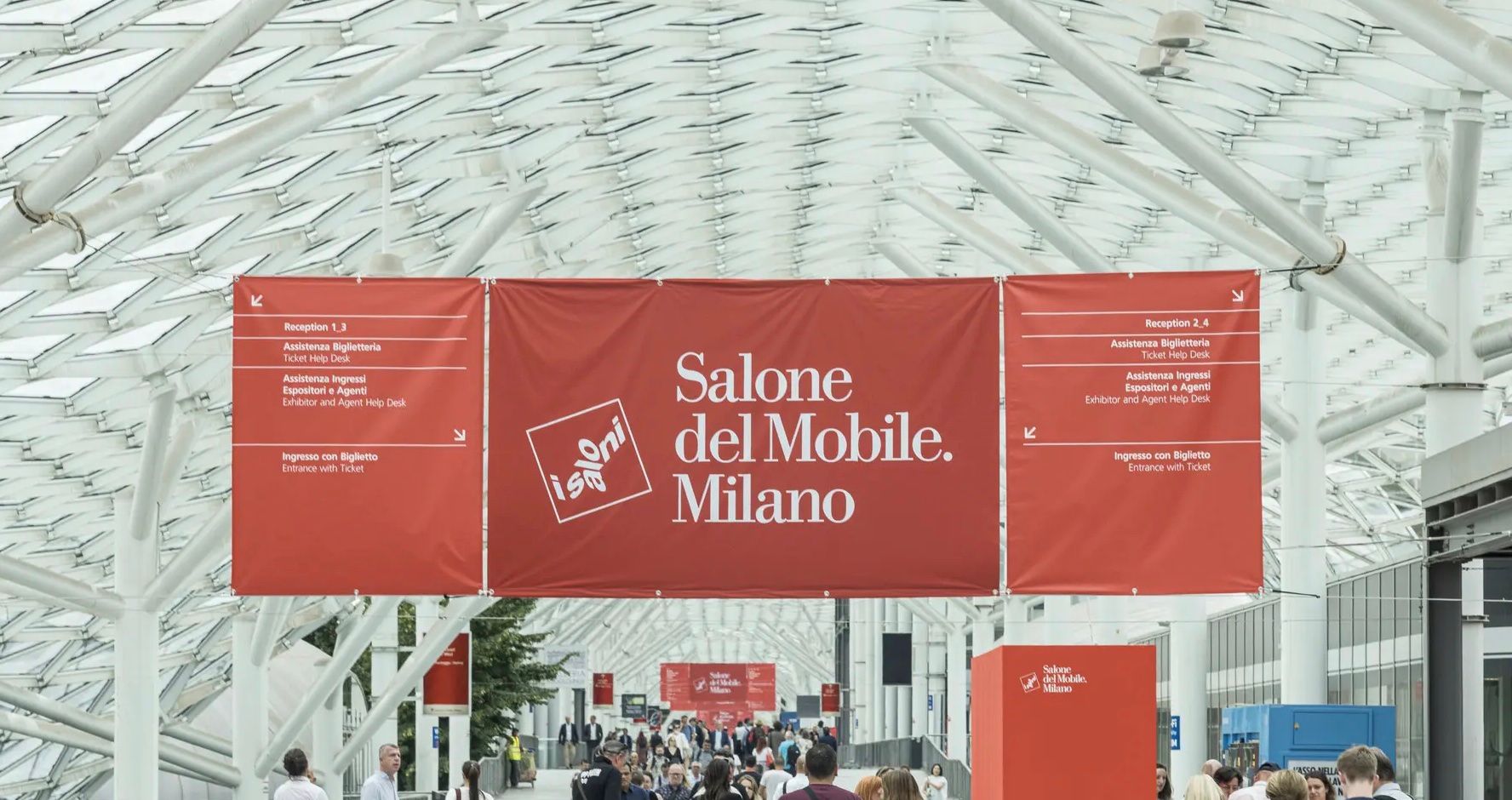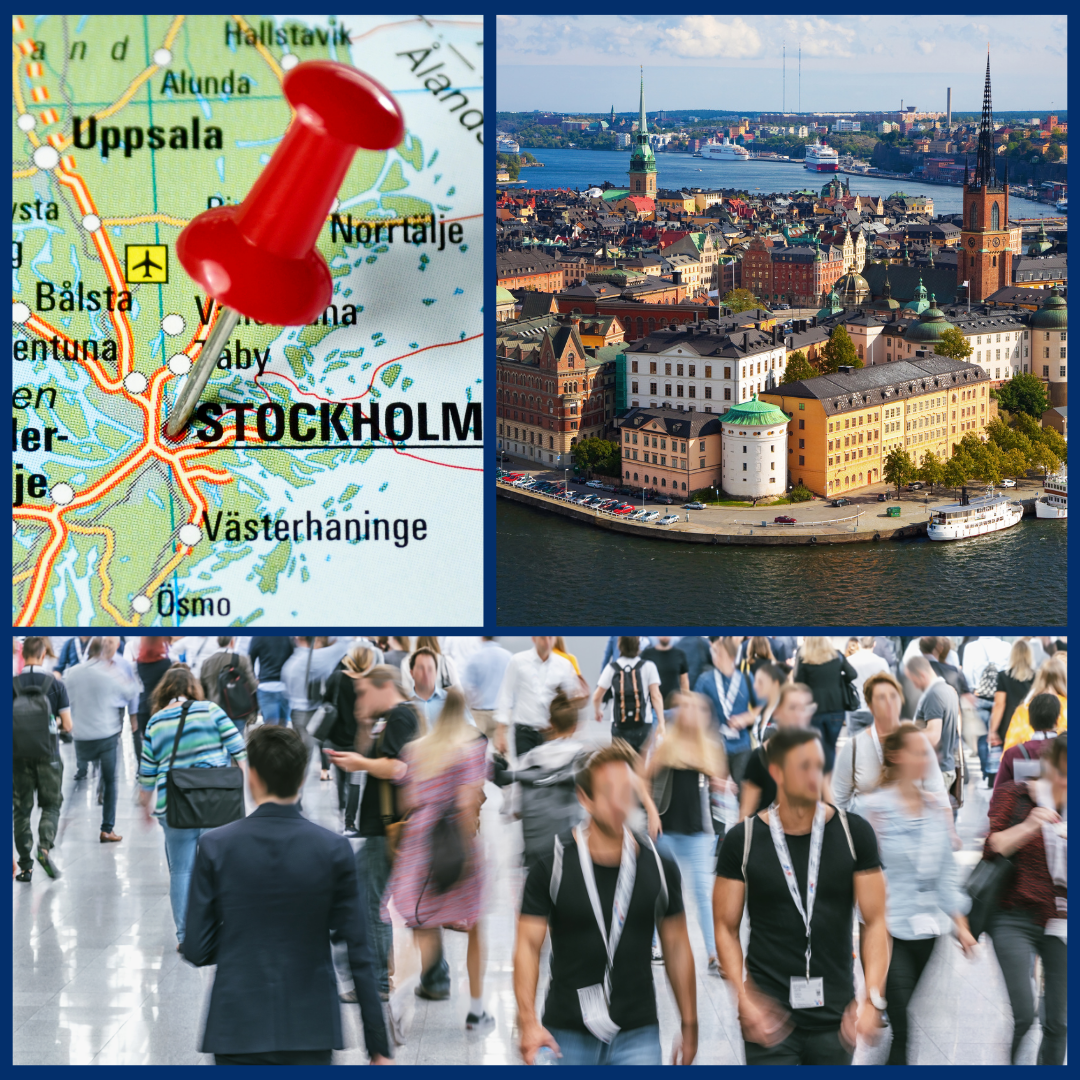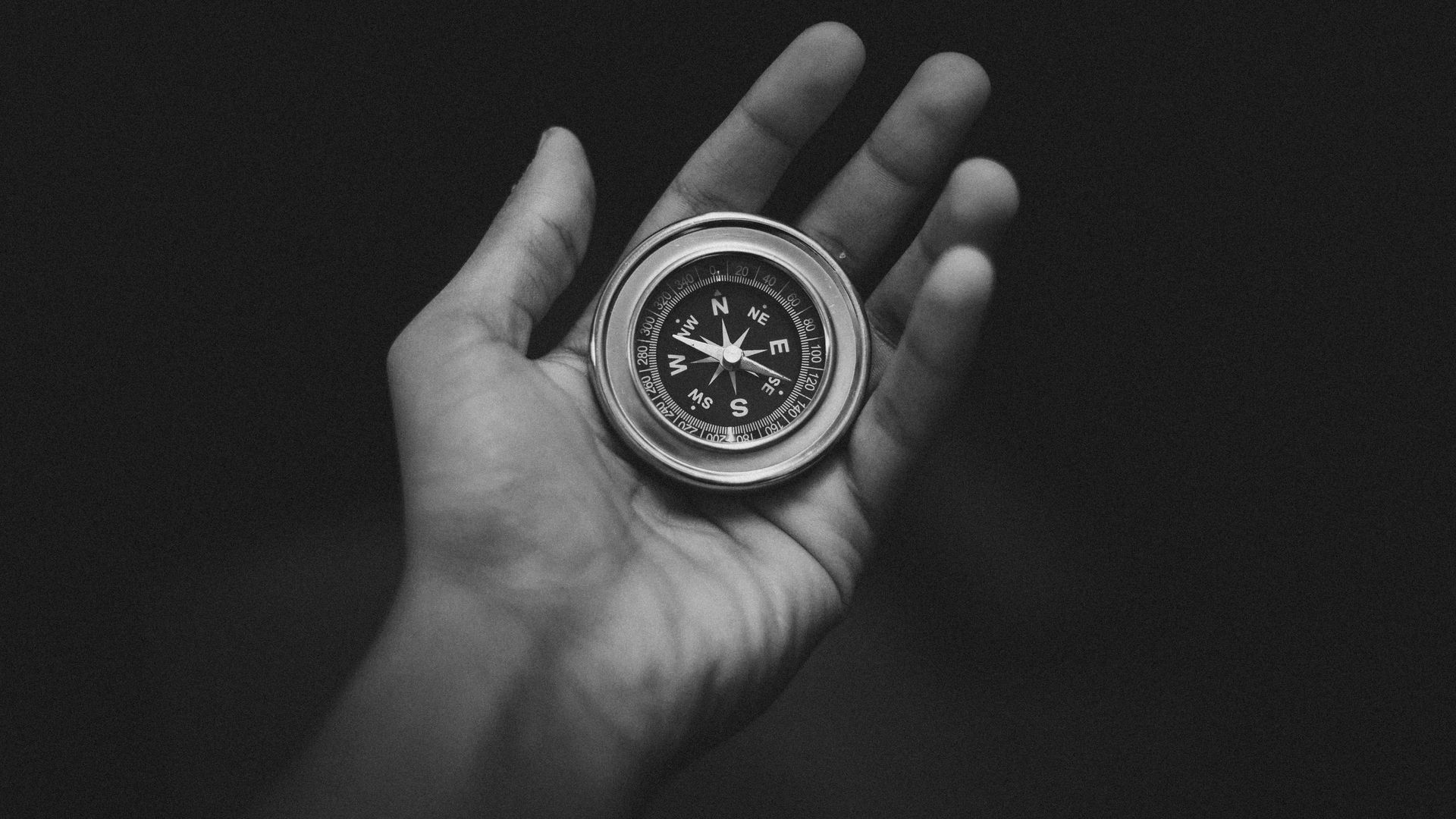Fortuny, 805 Giudecca, Venezia - La fabbrica dei segreti - The factory of secrets
Cristina Castiglioni Hue • 20 novembre 2020
Venezia, New York...ed il Giardino - Venice, New York...and the Garden
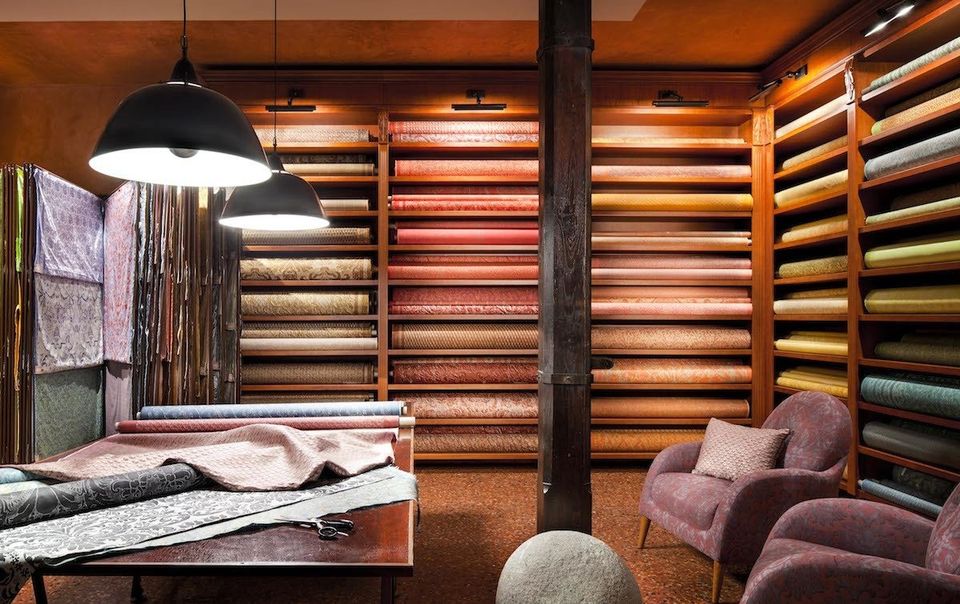
FORTUNY, 805 Giudecca, Venezia - La fabbrica dei segreti
Il nostro viaggio alla scoperta della ditta Fortuny inizia ad Agosto 2020 a Venezia, la città simbolo di arte, mistero e fascino indiscutibile, che ritrovi appena varchi il cancello in ferro battuto all’ 805 sull’isola della Giudecca.
Ma chi è Mariano Fortuny?
Mariano Fortuny nacque da una famiglia di rinomati artisti a Granada, Spagna, l’11 maggio 1871.
In seguito alla prematura morte del marito nel 1874, la madre di Mariano mandò il figlio con la sorella a Parigi.
Il giovane Fortuny rivelò presto un talento per la pittura, e altrettanto presto fu evidente che questo non era il solo dono che la natura gli aveva riservato. Nel 1889 si trasferirono a Venezia, dove Fortuny sarebbe rimasto per il resto della sua carriera artistica.
Fortuny era animato da un’industriosa curiosità creativa, che lo rese prolifico in diverse discipline artistiche: prima pittore, poi incisore, scultore, fotografo, architetto e inventore.
La moderna definizione di “artista” non è abbastanza per descriverlo adeguatamente.
Fu davvero un uomo del Rinascimento, che rilegava i propri libri e si disegnava da sé lampadari ed arredamento. Inventò uno dei primi variatori di luce, un’elica per imbarcazioni, si fabbricava da solo i colori, le tinture e i pennelli.
Con la “cupola Fortuny” rivoluzionò l’illuminazione scenica e la scenografia teatrale, mettendo a frutto le proprie teorie sulla luce indiretta e diffusa. La sua influenza sulla vita moderna, per quanto spesso ignorata, è rilevantissima. Nel 1921 tale sistema fu adottato anche dal Teatro “La Scala” di Milano.
Nel 1897, a Parigi, Fortuny incontrò la sua musa, Henriette Negrin.
Cinque anni più tardi, nel 1902, Henriette si trasferì a Venezia, a Palazzo Orfei, nella sua casa-atelier.
Il supporto incondizionato di Henriette fu fondamentale per la fioritura artistica di Mariano, che fece il suo ingresso nel mondo della moda nel 1907 con il Delphos, un abito elegante e versatile che realizzava l’impossibile: la perfetta interazione tra semplicità e complessità.
Più o meno nello stesso periodo, Fortuny iniziò a lavorare ai tessuti che vengono prodotti ancora oggi. Il processo produttivo di tali stoffe fu il coronamento delle sue competenze ingegneristiche, cromatiche, artistiche e progettuali, unite in una manifestazione di puro genio artistico. Fu lui ad inventare nel 1906 la plissettatura, e venne celebrato da figure come Marcel Proust e Gabriele D’Annunzio che definisce Mariano “un tintore alchimista”.
Fortuny coltivò la propria intramontabile passione per le belle arti e il design fino alla morte, che lo colse nella sua dimora veneziana il
2 maggio 1949.
L’eredità tessile di Fortuny
I leggendari tessuti di Mariano Fortuny, caratterizzati da una durata straordinaria, versatilità e una bellezza mistica, divennero presto famosissimi ed inimitabili. Per le tinture e i pigmenti Fortuny utilizzava formule di sua propria creazione, basate sulle antiche tecniche dei grandi maestri, riuscendo a conferire ai materiali un aspetto di autentica antichità.
I suoi contemporanei
lo applaudirono a livello internazionale, affermando che i suoi lavori trascendevano ogni possibile descrizione. Le creazioni di Fortuny erano così enigmatiche da suscitare spesso voci che insinuavano il ricorso alle arti magiche e alla stregoneria.
Nel 1927, l’arredatrice americana Elsie McNeill Lee rimase incantata dalla bellezza dei tessuti di Fortuny, esposti al Museo Carnavalet di Parigi. Intuendo che si sarebbero potuti vendere con successo ai decoratori e arredatori statunitensi, si recò a Venezia
per incontrarlo. Lo convinse e, con il suo negozio di New York al 509 di Madison Ave, divenne presto l’unica distributrice dei tessuti e dei capi d’abbigliamento Fortuny negli Stati Uniti.
Dopo la scomparsa di Fortuny, Elsie lo sostituì nella direzione operativa della fabbrica, dietro insistenza della vedova dell’artista.
La McNeill era infatti l’unica persona a conoscere a fondo tutti
gli aspetti, creativi, tecnici e commerciali dell’attività.
In seguito al matrimonio con un conte veneziano, divenne nota come contessa Elsie Lee Gozzi. I suoi straordinari sforzi e la sua indefessa volontà di conservare gli elevati standard di Fortuny contribuirono ad assicurare la continuità dell’attività della fabbrica tessile e del lavoro di Fortuny. Nel 1988 affidò la società al proprio intimo confidente, Maged F.Riad, per morire pochi anni dopo, nel 1994.
Da allora la famiglia Riad è la custode dell’eredità Fortuny.
Il complesso processo produttivo di Fortuny e i metodi in esso impiegati, mai riprodotti altrove, sono ancora custoditi nel segreto delle mura della fabbrica veneziana. La produzione artigianale rimane integra e incorrotta, continuando a far uso delle macchine e dei metodi sviluppati da Fortuny quasi un secolo fa. Stessi sono gli standard qualitativi imposti dall’ artista, cercati con la stessa devozione e passione che egli dedicava al proprio lavoro. Ogni rotolo è un pezzo d’arte unico che, con la dovuta cura, si conserverà per generazioni.
La Fabbrica della Giudecca e il Giardino
Edificata sull’isola della Giudecca di Venezia, dove un tempo sorgeva un antico convento chiuso in epoca napoleonica, la fabbrica Fortuny fu inaugurata nel 1921. Fortuny acquistò il terreno nel 1919 da Giancarlo Stucky, amico e proprietario del mulino a fianco, e diede personalmente le specifiche per la costruzione
dello stabilimento e la sistemazione delle macchine di produzione che egli stesso aveva inventato.
Ancora oggi operativa, con l’annesso laboratorio di design Giudecca 805, continua ad abbracciare la passione di Mariano Fortuny per la tradizione, il design e la tecnologia, custodendone lo spirito, intraprendente e intramontabile.
E’ grazie a Elise McNeil, ovvero la Contessa Gozzi, che negli anni 50 viene restaurato lo splendido giardino, segreto, dentro le mura dell’edificio Fortuny, considerato tra i più belli di Venezia, dove trovano collocazione, tra gli altri, il glicine e l’edera, piante che hanno ispirato alcuni dei decori Fortuny.
È una storia che ci ha tanto affascinato e ci ha fatto innamorare del magico luogo della produzione, ma anche dei favolosi tessuti che sicuramente sapremo proporre con il rispetto dovuto, sia per la lavorazione che per la destinazione.
Tutti i tessuti iconici di Fortuny hanno una loro bellezza, e storia, noi abbiamo apprezzato “Piume”, “Favo”, “Caravaggio” e “Isole”…ma ce ne sono davvero tanti e scegliere è quasi impossibile!
“Always beautiful never the same” (Fortuny)
“Sempre bellissimo, mai lo stesso”
English version:
FORTUNY, 805 Giudecca, Venice - The factory of secrets
Our journey to discover the Fortuny company begins in August 2020 in Venice, the city symbol of art, mystery and indisputable charm, which you will find as soon as you cross the wrought iron gate at 805 on the Giudecca island.
But who is Mariano Fortuny?
Mariano Fortuny was born into a family of renowned artists in Granada, Spain, on 11 May 1871.
Following her husband's untimely death in 1874, Mariano's mother sent her son with his sister to Paris.
The young Fortuny soon revealed a talent for painting, and just as soon it was evident that this was not the only gift that nature had given him. In 1889 they moved to Venice, where Fortuny would remain for the rest of his artistic career.
Fortuny was animated by an industrious creative curiosity, which made him prolific in various artistic disciplines: first a painter, then an engraver, sculptor, photographer, architect and inventor.
The modern definition of "artist" is not enough to describe it adequately. He was really a Renaissance man, who bound his own books and designed himself chandeliers and furniture. He invented one of the first light dimmers, a propeller for boats, he made the colors, dyes and brushes himself.
With the "Fortuny dome" he revolutionized stage lighting and theatrical scenography, putting his theories on indirect and diffused light to good use. Its influence on modern life, although often ignored, is very significant. In 1921 this system was also adopted by the “La Scala” Theater in Milan.
In 1897, in Paris, Fortuny met his muse, Henriette Negrin.
Five years later, in 1902, Henriette moved to Venice, in Palazzo Orfei, in her house-atelier.
Henriette's unconditional support was fundamental for Mariano's artistic flowering, who entered the world of fashion in 1907 with the Delphos, an elegant and versatile dress that achieved the impossible: the perfect interplay between simplicity and complexity.
Around the same time, Fortuny began working on fabrics that are still produced today. The production process of these fabrics was the culmination of his engineering, chromatic, artistic and design skills, united in a manifestation of pure artistic genius. It was he who invented pleating in 1906, and was celebrated by figures such as Marcel Proust and Gabriele D'Annunzio who defines Mariano as "an alchemist dyer".
Fortuny cultivated his timeless passion for fine arts and design until his death, which caught him in his Venetian home on May 2, 1949.
Fortuny's textile heritage
The legendary fabrics of Mariano Fortuny, characterized by an extraordinary duration, versatility and a mystical beauty, soon became very famous and inimitable. For the dyes and pigments Fortuny used formulas of his own creation, based on the ancient techniques of the great masters, managing to give the materials an aspect of authentic antiquity.
His contemporaries applauded him internationally, claiming that his works transcended any possible description.
Fortuny's creations were so enigmatic that they often stirred up rumors suggesting the use of magical arts and witchcraft.
In 1927, the American interior designer Elsie McNeill Lee was enchanted by the beauty of Fortuny's fabrics, exhibited at the Carnavalet Museum in Paris. Realizing that they could be successfully sold to US decorators and interior designers, she went to Venice to meet him. He convinced him and, with his New York store at 509 Madison Ave, he soon became the only distributor of Fortuny fabrics and clothing in the United States.
After Fortuny's disappearance, Elsie replaced him in the operational management of the factory, at the insistence of the artist's widow. McNeill was in fact the only person who knew all the creative, technical and commercial aspects of the business in depth.
Following her marriage to a Venetian count, she became known as Countess Elsie Lee Gozzi. His extraordinary efforts and his tireless will to maintain Fortuny's high standards helped to ensure the continuity of Fortuny's textile factory and work.
In 1988 he entrusted the company to his intimate confidant, Maged F. Riad, to die a few years later, in 1994.
Since then, the Riad family has been the custodian of the Fortuny legacy.
Fortuny's complex production process and the methods used in it, never reproduced elsewhere, are still kept in the secret of the walls of the Venetian factory. Artisanal production remains intact and uncorrupted, continuing to make use of the machines and methods developed by Fortuny almost a century ago. The same are the quality standards imposed by the artist, sought with the same devotion and passion that he dedicated to his work.
Each roll is a unique piece of art that, with due care, will be preserved for generations.
The Giudecca Factory and the Garden
Built on the Giudecca island of Venice, where an ancient convent once closed in the Napoleonic era, the Fortuny factory was inaugurated in 1921. Fortuny bought the land in 1919 from Giancarlo Stucky, friend and owner of the nearby mill, and personally gave the specifications for the construction of the factory and the arrangement of the production machines that he himself had invented. Still operational today, with the adjoining Giudecca 805 design laboratory, it continues to embrace Mariano Fortuny's passion for tradition, design and technology, preserving its enterprising and timeless spirit.
It is thanks to Elise McNeil, or Countess Gozzi, that in the 1950s the splendid secret garden was restored within the walls of the Fortuny building, considered one of the most beautiful in Venice, where, among others, the wisteria and ivy, plants that inspired some of the Fortuny decorations.
It is a story that fascinated us so much and made us fall in love with the magical place of production, but also with the fabulous fabrics that we will surely be able to propose with due respect, both for the processing and for the destination.
All of Fortuny's iconic fabrics have their own beauty and history, we appreciated “Piume”, “Favo”, “Caravaggio” and “Isole”… but there are so many and choosing is almost impossible!
“Always beautiful never the same” (Fortuny)
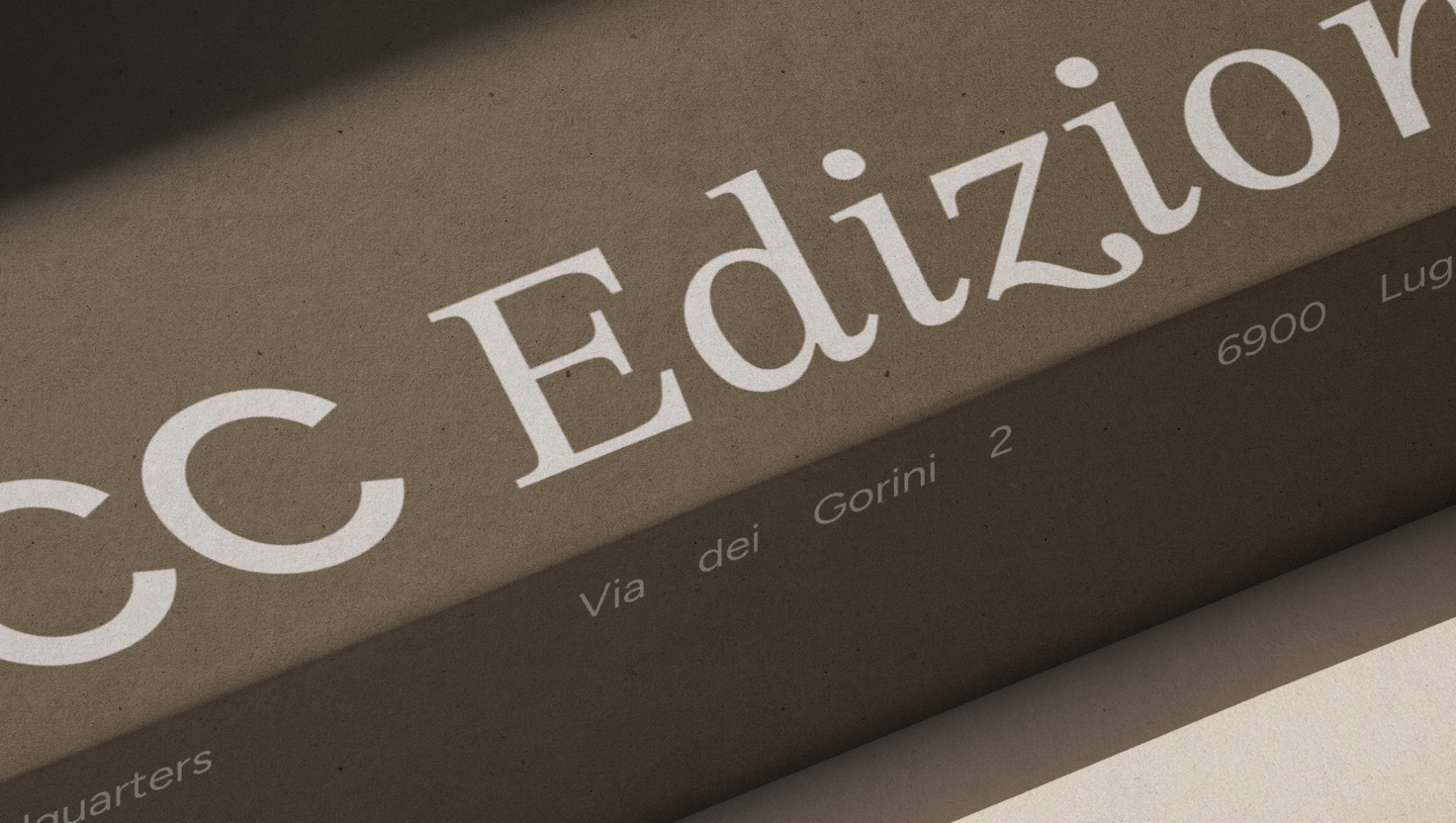
“The World’s Room nasce dall’idea di raccogliere materiali, forme e riferimenti della natura universale per reinterpretarli attraverso la sensibilità progettuale dei designer ICC. Questa collezione di oggetti di design di lusso si configura come un manifesto di contaminazione culturale consapevole, in cui tradizioni e diversità si intrecciano e si ridefiniscono attraverso l’eleganza sobria e la maestria dell’artigianato italiano contemporaneo. Ogni pezzo trae origine da materiali archetipici – vetro, metallo, porcellana, storicamente utilizzati in molteplici contesti culturali e reinterpretati con un linguaggio formale contemporaneo, capace di infondere nuova vita a forme senza tempo, cariche di significato e valore simbolico.” Con piacere posso annunciare che l’iniziativa dell’Organizzazione ICC – Insubriae Contract Couture , di cui siamo Design Partner dal 2022, ICC EDIZIONI ha pubblicato il suo primo catalogo contenente alcuni pezzi unici disegnati dai propri Partner internazionali. L’edizione, e in particolare il progetto di The World’s Room , è curato dall’interior design Norma Márquez, esperta nella progettazione e sviluppo di progetti di interior design con oltre 10 anni di esperienza nella realizzazione di progetti aziendali, commerciali e residenziali con studio a Milano. La prima campagna curata da ICC Edizioni propone una selezione raffinata che comprende: • Set di vasi in vetro soffiato, impreziositi da sottili colature metalliche applicate a mano. Ogni esemplare è unico, espressione di un dialogo tra purezza formale ispirata al mondo naturale e l’autenticità del gesto artigianale. Pensati per ambienti interni ed esterni, questi oggetti trascendono la mera funzione decorativa per diventare testimonianze di qualità progettuale e di eleganza discreta. • Lampada da tavolo in vetro e porcellana, frutto di un’equilibrata fusione tra tecniche artigianali tradizionali e un’estetica essenziale e raffinata. La luce diffusa genera un’atmosfera intima e avvolgente, trasformando l’oggetto in una scultura luminosa che dialoga con lo spazio. • Set di tavolini dalle forme organiche, caratterizzata da superfici in vetro sagomato che evocano le cromie e i riflessi del mare. La complessità della lavorazione artigianale dà vita a variazioni tonali e trasparenze che esaltano la poeticità funzionale dell’oggetto, tra scultura e design. Tutti gli elementi della collezione condividono una visione coerente: celebrare l’eccellenza dell’artigianato italiano attraverso una grammatica visiva che apre un dialogo sensibile e autentico tra culture. La filosofia ICC si manifesta in ogni dettaglio, dalla progettazione alla produzione, con una particolare attenzione alla selezione dei materiali, alla sostenibilità dei processi e al ruolo simbolico dell’oggetto come custode di memoria e identità. The World’s Room non semplicemente una collezione, ma un racconto multisensoriale e materico, un invito al viaggio attraverso il design contemporaneo che connette persone, luoghi e culture, esaltando la creatività progettuale e l’eccellenza del Made in Italy. Chi è Norma Márquez ? Andiamo a conoscerla nella nostra intervista: “Sono un’ Architetta d’Interni, Visual Merchandiser e Art & Design Curator , residente a Milano da sei anni, città nella quale ho completato parte dei miei studi di design. Svolgo la mia attività come creativa multidisciplinare , poiché considero che ogni disciplina dell’arte e del design rappresenti un punto di connessione capace di generare progetti innovativi e di forte impatto comunicativo. Parallelamente alla mia attività come Architetta d’Interni, sono fondatrice dell’iniziativa culturale A+D , nata per promuovere in Europa giovani artisti e designer emergenti latinoamericani. L’idea di promuovere artisti e designer latinoamericani in Italia nasce dal mio legame familiare con l’arte e dal profondo interesse nel creare un ponte tra la ricchezza storica e culturale di un Paese come l’Italia e il meraviglioso capitale umano di giovani talenti, rispondendo all’esigenza di dare visibilità ai loro progetti. Attualmente l’iniziativa conta la partecipazione di oltre 20 artisti e creativi. Nel maggio 2022 ho curato la mostra d’arte Trust the Artists , in collaborazione con Boccanera Gallery nella città di Trento, esponendo opere di sette artisti provenienti da quattro Paesi dell’America Centrale e Meridionale. Nel settembre 2024 sono stata invitata a prendere parte al Gala MAMBO 2024 (Museo d’Arte Moderna di Bogotá) con la mia iniziativa A+D, curando un tour di arte e design dedicato a due collezionisti e sostenitori della cultura in Colombia. Il tour si è svolto durante la Milano Fashion Week 2025, includendo visite a gallerie d’arte e di design di primaria importanza in città. Nell’agosto 2024 ho curato l’articolo GABRIEL ANGEL tra mito, etica e cultura pop per la rivista d’arte milanese HESTETIKA . Dal 2021 al 2023 ho collaborato come Art & Design Editor per la rivista digitale di arte, design e moda sostenibili: The Green Side of Pink (TGSOP), fondata a Milano nel 2017, alla quale contribuiscono editor e designer da tutto il mondo. In questo contesto ho curato, tra gli altri, l’articolo pubblicato il 10 giugno 2023 sul progetto artistico Giralamoda , prodotto da Trama Plaza e presentato presso il Teatro La Creta di Milano. Nel 2021 ho partecipato al Milano Graphic Festival con la proposta progettuale di uno showroom per l’esposizione di oggetti del celebre marchio italiano Memphis , in collaborazione con architetti, visual merchandiser e fotografi locali. Per la stessa manifestazione ho contribuito anche all’installazione visiva della mostra Erbario di Ugo La Pietra . Nel 2014 ho fondato a Bogotá il mio studio di Interior Design: Location Design , realizzando, diversi progetti per uffici, retail e residenze private. Questa esperienza mi ha permesso di affinare le mie competenze creative applicando i concetti di design appresi in Italia presso lo Istituto Europeo di Design (IED) di Milano, la Scuola Superiore di Arti Applicate del Castello Sforzesco e la NABA – Nuova Accademia di Belle Arti, oltre alla mia formazione in Architettura d’Interni presso l’Istituto di Design LCI – LaSalle College . Attualmente opero come consulente per studi di architettura e clienti privati nello sviluppo di progetti di interior design tra Bogotá, Barcellona e Milano . Porto avanti la mia iniziativa dedicata alla promozione di artisti e designer latinoamericani in Europa e collaboro come designer associata con lo studio di design ICC – Insubriae Contract Couture di Lugano, specializzato in progetti di lusso nel global design. In questo contesto, ricopro il ruolo di curatrice di ICC Edizioni , un’iniziativa dedicata alla creazione di oggetti di design di lusso e in edizione limitata. La mia attività professionale si svolge tra Colombia, España e Italia, permettendomi di creare connessioni uniche tra capitale umano, competenze professionali, visione artistica e valori culturali di mondi diversi.” I pezzi sono tutti su ordinazione, numerati, limitati, e prodotti artigianalmente dalle sapienti mani del nostro migliore Made in Italy e Brianza. Potranno far parte dei vostri progetti d’interni grazie ai Design Partner di ICC . Unico canale di vendita. “ Per essere unici bisogna essere diversi ” Coco Chanel English version: “ The World’s Room was born from the idea of gathering materials, forms, and references from the universal language of nature and reinterpreting them through the design sensibility of ICC’s creators. It is a collection of luxury design objects that embodies a philosophy of conscious cultural fusion, where traditions and diversity are transformed through the refined and measured lens of Italian craftsmanship. Each object originates from an archetypal material—glass, metal, porcelain—used in different cultural contexts and reimagined to create unique, contemporary, and meaningful pieces.” I'm pleased to announce that, as part of the initiative launched by the ICC – Insubriae Contract Couture Organization, of which we have been a Design Partner since 2022, ICC EDIZIONI has published its first catalog featuring unique pieces designed by its international partners. The edition, and specifically the project for The World's Room , is curated by interior designer Norma Márquez , an expert in the design and development of interior design projects with over 10 years of experience in corporate, commercial, and residential projects, based in Milan. The carefully curated selection of ICC Edizioni’s first campaign includes: • Blown glass vase set , enriched with hand-applied metallic drippings. Each piece is one of a kind—a synthesis of pure, nature-inspired form and the tactile gesture of the artisan. Designed for both indoor and outdoor settings, these objects are not mere decorative accents but high-quality functional forms, capable of enhancing any space with subtle elegance and character. • Table lamp combining glass and porcelain, blending traditional techniques with a timeless, minimalist aesthetic. The diffused light is warm and enveloping, carefully crafted to create intimate and sophisticated atmospheres, turning the object into a luminous sculpture. • Set of side tables featuring organic shapes and molded glass tops that evoke the reflections and hues of the sea. The transparency and tonal variations result from a complex artisanal process that transforms a simple material into a sculptural and poetically functional object. All the pieces embody ICC’s philosophy, reflected in every detail — from design to production — with a strong focus on material selection, process sustainability, and the symbolic value of each object as a vessel of memory and identity. The World’s Room is more than just a collection: it’s a sensory and tactile narrative, an invitation to travel through design, connecting people, places, and cultures through creative vision and the excellence of Made in Italy. Who is Norma Márquez ? Let's get to know her in our interview. “I am an Interior Architect, Visual Merchandiser, and Art & Design Curator , living in Milan for six years, the city where I completed part of my design studies. I work as a multidisciplinary creative , as I believe that each discipline of art and design represents a point of connection capable of generating innovative projects with a strong communicative impact. In parallel to my work as an Interior Architect, I am the founder of the cultural initiative A+D , created to promote young emerging Latin American artists and designers in Europe. The idea of promoting Latin American artists and designers in Italy stems from my family connection to art and from a deep interest in building a bridge between the historical and cultural richness of a country like Italy and the wonderful human capital of young talents, responding to the need to give visibility to their projects. The initiative currently has the participation of over 20 artists and creatives. In May 2022, I curated the art exhibition Trust the Artists, in collaboration with Boccanera Gallery in the city of Trento, exhibiting works by seven artists from four Central and South American countries. In September 2024, I was invited to participate in the MAMBO 2024 Gala (Museum of Modern Art in Bogotá) with my A+D initiative, curating an art and design tour dedicated to two collectors and cultural supporters in Colombia. The tour took place during Milan Fashion Week 2025, including visits to leading art and design galleries in the city. In August 2024, I edited the article " GABRIEL ANGEL between myth, ethics, and pop culture" for the Milanese art magazine HESTETIKA . From 2021 to 2023, I collaborated as Art & Design Editor for the digital magazine of sustainable art, design, and fashion: The Green Side of Pink (TGSOP), founded in Milan in 2017, to which editors and designers from around the world contribute. In this context, I edited, among others, the article published on June 10, 2023, on the artistic project Giralamoda , produced by Trama Plaza and presented at the Teatro La Creta in Milan. In 2021, I participated in the Milano Graphic Festival with a design proposal for a showroom displaying objects from the renowned Italian brand Memphis , in collaboration with local architects, visual merchandisers, and photographers. For the same event, I also contributed to the visual installation of the Erbario exhibition by Ugo LaPietra . In 2014, I founded my own interior design studio, Location Design , in Bogotá, completing several projects for offices, retail spaces, and private residences. This experience allowed me to hone my creative skills by applying the design concepts I learned in Italy at the European Institute of Design (IED) in Milan, the Scuola Superiore di Arti Applicate del Castello Sforzesco, and NABA – Nuova Accademia di Belle Arti , in addition to my training in Interior Architecture at the LCI – LaSalle College Institute of Design . I currently work as a consultant for architectural firms and private clients in the development Interior design projects between Bogotá, Barcelona, and Milan . I continue my initiative dedicated to promoting Latin American artists and designers in Europe and collaborate as an associate designer with the ICC – Insubriae Contract Couture design studio in Lugano, specializing in luxury global design projects. In this context. I serve as curator of ICC Edizioni , an initiative dedicated to the creation of luxury and limited-edition design objects. My professional activity spans Colombia, Spain, and Italy, allowing me to forge unique connections between human capital, professional skills, artistic vision, and cultural values from different worlds." All pieces are made to order, numbered, limited, and handcrafted by the expert hands of our finest Made in Italy and Brianza designers. They can be part of your interior design projects thanks to ICC's Design Partners . A single sales channel. " To be unique, you have to be different ." Coco Chanel
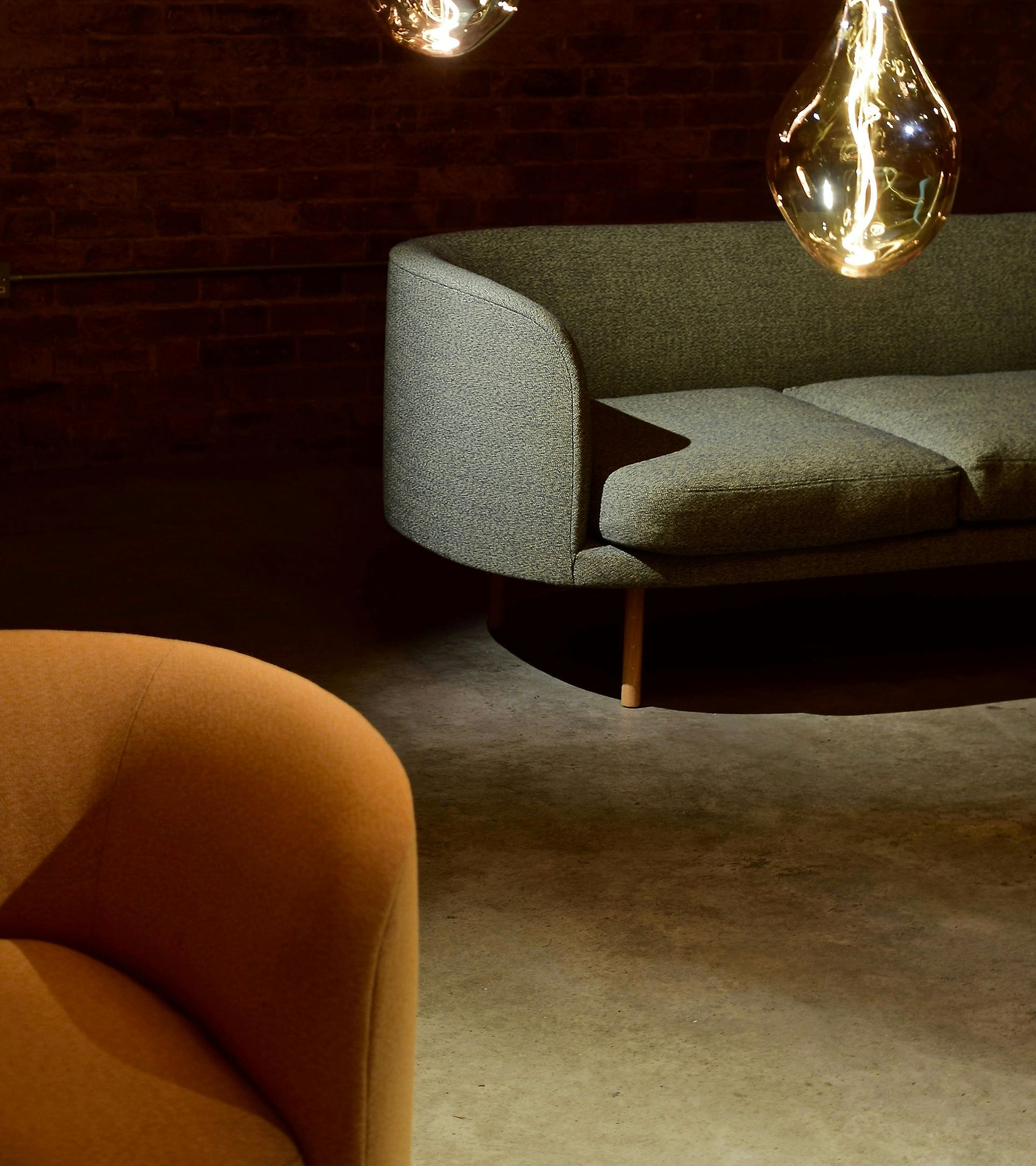
Sono felice di condividere con voi una nuova tappa del mio percorso professionale: ho deciso di intraprendere ufficialmente il ruolo di Product Consultant nel Design. La mia passione per la ricerca, la curiosità verso i materiali e le tendenze e il desiderio di creare connessioni tra aziende, designer e clienti mi hanno portata naturalmente a questo nuovo capitolo. Con questa attività voglio aiutare showroom, attività commerciali, studi di architettura e privati a scegliere i prodotti giusti per i loro progetti, trasformando ogni spazio in un ambiente distintivo, funzionale ed emozionale. Cos’è un Product Consultant nel Design Il Product Consultant nel design è una figura che unisce occhio estetico, conoscenza tecnica e visione strategica. Non si limita a proporre prodotti, ma seleziona e cura soluzioni capaci di dare coerenza, identità e valore a un progetto. A differenza di un interior designer o di un buyer tradizionale, mi concentro sul prodotto come strumento narrativo: ogni pezzo deve essere parte di una storia più grande, che parli di chi vivrà lo spazio e di chi lo ha creato. Perché questa figura è utile adesso Il mondo del design si evolve rapidamente: materiali innovativi, brand emergenti, nuove esigenze legate alla sostenibilità e all’ospitalità ridefiniscono continuamente il mercato. Tra le centinaia di proposte disponibili, selezionare i prodotti giusti può diventare complesso e rischioso. La mia consulenza nasce proprio per fare da filtro, individuare ciò che è davvero coerente con lo stile del progetto e ridurre il rischio di scelte poco efficaci. A chi mi rivolgo Il mio lavoro si rivolge a diverse realtà, ognuna con bisogni specifici: - Showroom : aiuto ad ampliare il catalogo con brand e prodotti esclusivi, italiani e internazionali, capaci di differenziare l’offerta e attrarre nuovi clienti. - Attività commerciali : supporto nella selezione del prodotto più corretto per posizionamento e target, creando assortimenti coerenti e distintivi. - Studi di architettura e designer : collaboro nella scelta di prodotti coerenti con lo stile progettuale, per garantire al cliente finale un risultato di qualità e in linea con le sue aspettative. - Privati : accompagno nella ricerca di pezzi unici e caratterizzanti, capaci di rendere ogni ambiente personale e autentico. Il mio metodo Ogni consulenza è un percorso costruito su misura. Ecco come lavoro: 1. Brief e obiettivi : ascolto delle esigenze, del budget e delle tempistiche. 2. Ricerca e scouting : esplorazione tra fiere, produttori e brand, sia italiani che internazionali. 3. Concept : sviluppo di moodboard, palette e linee guida per dare coerenza e visione. 4. Selezione e shortlist : creazione di una proposta ragionata con opzioni comparabili per materiali, finiture e costi. 5. Implementazione e follow-up : contatti con fornitori, preventivi, campioni e assistenza fino alla realizzazione finale. Servizi e iniziative che posso svolgere La mia attività di Product Consultant può includere diverse iniziative, tra cui: - Catalog Expansion per showroom : scouting di nuovi brand e collezioni per arricchire l’offerta. - Product Fit Audit per retail : revisione e ottimizzazione dell’assortimento in base a target e posizionamento. - Product Matching per studi : selezione di prodotti coerenti con concept e stile progettuale. - Trend & Materials Report : aggiornamenti periodici sulle tendenze del settore e sui materiali emergenti. - Moodboard & Concept Pack : strumenti visivi per guidare clienti e team nella scelta finale. - Sourcing internazionale : ricerca di prodotti e artigiani anche fuori dall’Italia, esplorando mercati e fiere internazionali. La mia presenza alle fiere internazionali Per svolgere al meglio questo ruolo, considero fondamentale il contatto diretto con le novità del settore. Partecipo regolarmente a fiere internazionali del design come il Salone del Mobile di Milano , Maison & Objet di Parigi , la Stockholm Furniture e la settimana del design di Stoccolma , oltre a manifestazioni legate all’ospitalità e ad altri eventi di riferimento. Queste esperienze mi permettono di restare aggiornata, conoscere nuove realtà e portare valore concreto ai miei clienti. Cosa mi distingue - Curiosità internazionale : non mi limito al Made in Italy, ma esploro anche realtà artigiane e brand emergenti da tutto il mondo. - Rete di partnership consolidate : relazioni costruite nel tempo con aziende, artigiani e produttori. - Aggiornamento costante : presenza attiva a fiere ed eventi di settore. - Approccio su misura : ogni consulenza è personalizzata e calibrata sugli obiettivi del cliente. - Innovazione : ho disegnato e brevettato un frigorifero di design , progetto che esprime la mia capacità di unire creatività, tecnologia, funzionalità e ricerca estetica. Come lavoriamo insieme La collaborazione può avvenire in diversi formati: - consulenze singole per esigenze specifiche , - pacchetti di scouting e selezione , - accompagnamenti continuativi per showroom o studi . I risultati concreti includono: moodboard, shortlist di prodotti comparativi, campioni materiali, schede prodotto e supporto nei rapporti con i fornitori. Se sei uno showroom, un’attività commerciale, uno studio di architettura o un privato e vuoi scoprire come posso aiutarti a selezionare i prodotti giusti per il tuo progetto, contattami per una consulenza conoscitiva : cristina@castiglionihuedesign.com English version: I’m excited to share a new chapter in my professional journey: I’ve officially embraced the role of Product Consultant in Design . My passion for research, curiosity for materials and trends, and the desire to create connections between companies, designers, and clients have naturally led me here. Through this activity, I aim to support showrooms, retail businesses, design studios, architects, and private clients in selecting the right products for their projects—transforming spaces into distinctive, functional, and emotional environments. What is a Product Consultant in Design A Product Consultant in design combines aesthetic sense, technical knowledge, and strategic vision. It’s not just about suggesting products, but about curating solutions that bring coherence, identity, and value to each project. Unlike an interior designer or a traditional buyer, my focus is on the product as a storytelling tool: every piece must be part of a bigger narrative, one that reflects the people who will live in the space and those who create it. Why this role matters today The design world evolves at a fast pace: innovative materials, emerging brands, and new needs tied to sustainability and hospitality constantly reshape the market. With hundreds of options available, choosing the right products can be complex and risky. My consultancy was born to act as a filter—identifying what is truly aligned with a project’s style and reducing the risk of ineffective choices. Who I work with (and what you gain) My consultancy is designed for different clients, each with specific needs: - Showrooms : I help expand catalogs with exclusive brands and products—Italian and international—that differentiate the offer and attract new customers. - Retail businesses : I support the selection of the right products for positioning and target audiences, creating consistent and distinctive assortments. - Design studios and architects : I assist in choosing products that match the project’s style, ensuring client satisfaction with high-quality, coherent solutions. - Private clients : I guide the search for unique, characterful pieces that make each environment authentic and personal. My method Every consultancy is a tailored journey. Here’s how I work: 1. Brief and goals : listening carefully to needs, budget, and timing. 2. Research and scouting : exploring fairs, producers, and brands, both Italian and international. 3. Curatorship and concept: creating moodboards, palettes, and guidelines to provide vision and coherence. 4. Selection and shortlist : presenting a reasoned proposal with comparable options for materials, finishes, and costs. 5. Implementation and follow-up : liaising with suppliers, managing samples and quotes, and supporting the process until completion. Services and initiatives I offer My role as Product Consultant can include several initiatives, such as: - Catalog Expansion for showrooms : scouting new brands and collections to enrich the offer. - Product Fit Audit for retail : reviewing and optimizing assortments in line with target and positioning. - Product Matching for design studios : selecting products that align with the project’s concept and style. - Trend & Materials Report : periodic updates on industry trends and emerging materials. - Moodboard & Concept Pack : visual tools to guide teams and clients in the decision-making process. - International sourcing : discovering products and artisans worldwide by attending leading design fairs. My presence at international design fairs To bring value to my clients, I believe it’s essential to stay connected with the pulse of the design world. I regularly attend international design fairs such as the Salone del Mobile in Milan, Maison & Objet in Paris, the Stockholm Design Week , along with leading events in the hospitality sector and beyond. These experiences allow me to stay updated, discover new realities, and bring fresh ideas and solutions to every project. What sets me apart - International curiosity : I don’t limit myself to Made in Italy, but explore artisans and emerging brands worldwide. - Consolidated partnerships : strong relationships built over time with companies, artisans, and producers. - Continuous update : active presence at fairs and industry events. - Tailored approach : every consultancy is personalized and built around the client’s goals. - Innovation : I designed and patented a designer refrigerator , a project that expresses my ability to combine creativity, technology, functionality and aesthetic research. How we can work together Collaboration can take different forms: - one-off consultations for specific needs , - scouting and selection packages , - ongoing support for showrooms or studios . Concrete deliverables may include moodboards, product shortlists, material samples, product sheets, and supplier management support. If you’re a showroom, retail business, design studio, architect, or private client and want to discover how I can help you select the right products for your project, feel free to reach out for an introductory consultancy: cristina@castiglionihuedesign.com
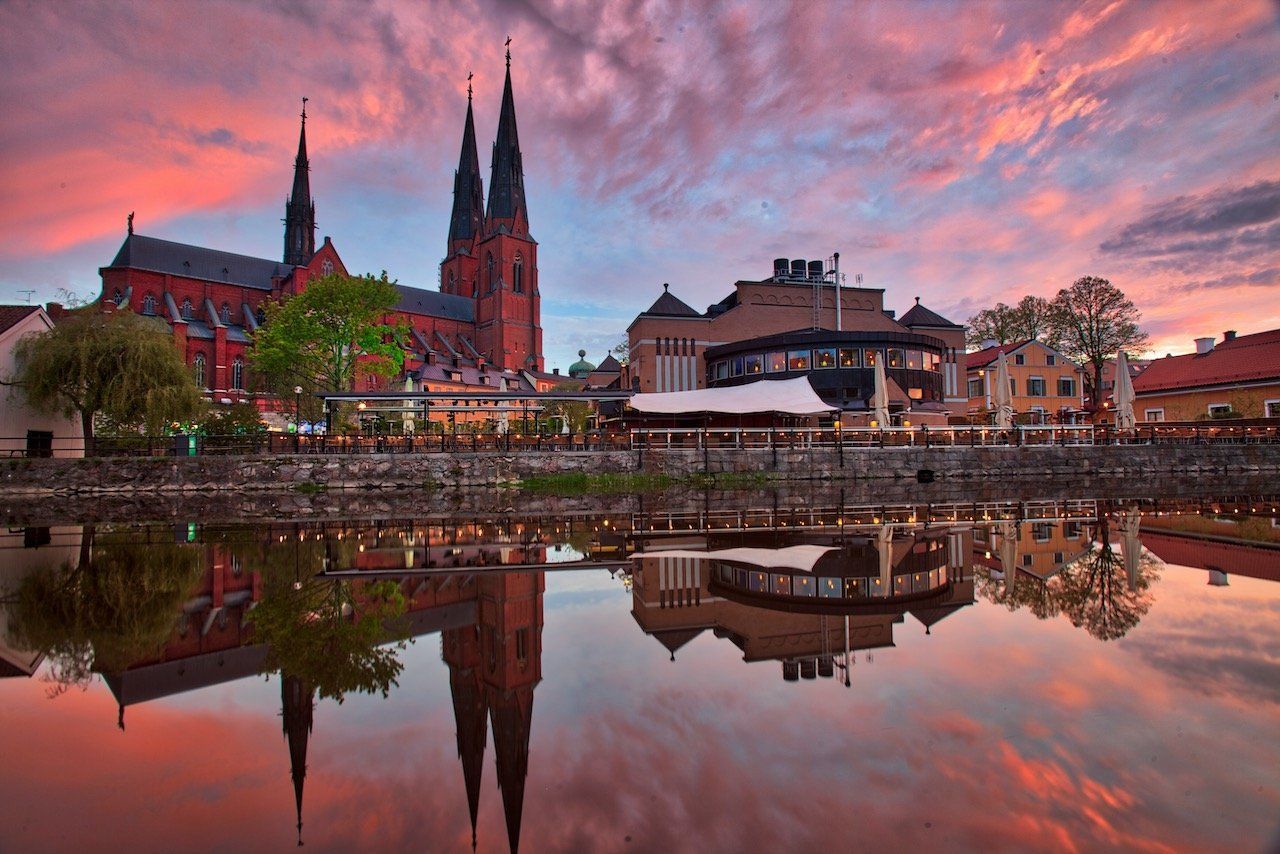
Dal 1° novembre 2024, CHD vi aspetta in una nuova sede! Siamo entusiasti di annunciare la nostra presenza in un nuovo spazio, un punto d’incontro dove conoscervi e progettare insieme. Entriamo a far parte del prestigioso United Space di Uppsala , situato nell’iconico edificio Rådhuset , l’ex municipio storico affacciato su Stora Torget. Uno spazio elegante e funzionale, con 2.400 mq distribuiti su 4 piani , che ci offre nuove possibilità per accogliervi al meglio. - Un luogo per sognare insieme Che vogliate raccontarci i vostri sogni davanti a una tazza di tè nella lounge del piano terra, dove troverete anche il bar, o preferiate la riservatezza di una saletta privata, abbiamo il posto giusto per voi. La scelta è vostra , perché vogliamo che vi sentiate sempre a vostro agio. - Organizzare al meglio il nostro tempo insieme Per offrirvi un’esperienza su misura e dedicare la massima attenzione alla vostra casa o al vostro progetto nel settore dell’ospitalità e dell’intrattenimento, vi consigliamo di prenotare la vostra visita . - Consulenze tematiche per ogni esigenza Per l’occasione, abbiamo ideato consulenze personalizzate che spaziano dalla semplice “mise en place” alla definizione completa degli interni e dei giardini. Qualunque sia lo stile che amate, partiamo sempre da una solida base di Made in Italy , sinonimo di eleganza e qualità. Siamo qui per voi: pronti a trasformare i vostri sogni in realtà. E voi? Siete pronti a sognare con noi? English version: From November 1, 2024, CHD has a new home! We’re thrilled to announce our presence to a new space, a meeting point where we can connect and create together. We’re now part of the prestigious United Space in Uppsala , located in the iconic Rådhuset building , the historic former town hall overlooking Stora Torget. This elegant and functional venue spans 2,400 sqm across 4 floors , offering exciting new opportunities to welcome you. - A place to dream together Whether you’d like to share your ideas over a cup of tea in the ground-floor lounge, where the bar is also located, or prefer the privacy of one of the dedicated meeting rooms, we’ve got the perfect space for you. The choice is yours , because we want you to feel completely at ease. - Making the most of our time together To ensure a personalized experience and give your home or hospitality project the attention it deserves, we kindly suggest booking your visit with us. - Tailored consultations for every need To celebrate this occasion, we’ve designed thematic consultations ranging from simple table settings to the complete design of interiors and gardens. Whatever your preferred style, we always start from a solid foundation of Made in Italy , a hallmark of elegance and quality. We’re here for you, ready to turn your dreams into reality. And you? Are you ready to dream with us? Svensk version: Från och med den 1 november 2024 har CHD ett nytt hem! Vi är glada att kunna meddela att vi flyttar till en ny plats – en mötespunkt där vi kan träffas och skapa tillsammans. Vi blir en del av det prestigefyllda United Space i Uppsala , beläget i den ikoniska byggnaden Rådhuset , det historiska stadshuset vid Stora Torget. Denna eleganta och funktionella miljö sträcker sig över 2 400 kvm fördelade på fyra våningar , och erbjuder fantastiska möjligheter att välkomna dig på bästa sätt. - En plats för att drömma tillsammans Oavsett om du vill dela dina idéer över en kopp te i loungen på bottenvåningen, där det också finns en bar, eller om du föredrar avskildheten i ett av de privata mötesrummen, har vi det perfekta utrymmet för dig. Valet är ditt , för vi vill att du alltid ska känna dig bekväm. - Maximera vår tid tillsammans För att säkerställa en personlig upplevelse och ge ditt hem eller ditt projekt inom gästfrihet och underhållning den uppmärksamhet det förtjänar, rekommenderar vi att du bokar ditt besök hos oss. - Skräddarsydda konsultationer för alla behov För att fira denna händelse har vi skapat temakonsultationer som sträcker sig från enkel bordsdukning till fullständig design av interiörer och trädgårdar. Oavsett vilken stil du föredrar börjar vi alltid med en solid grund av Made in Italy , en symbol för elegans och kvalitet. Vi finns här för dig och är redo att förverkliga dina drömmar. Och du? Är du redo att drömma med oss? info@castiglionihuedesign.com




